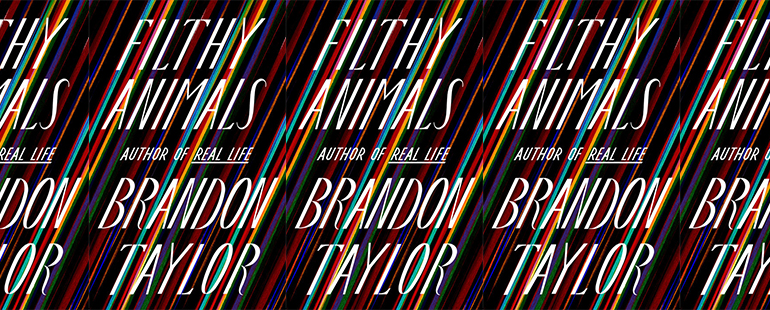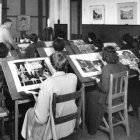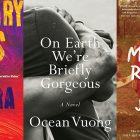The Uncategorizable Filthy Animals

In “Potluck,” the first story of Brandon Taylor’s new collection, Filthy Animals, out this week, a grad student named Lionel goes to a potluck dinner in a small college town. Arriving late to the festivities, Lionel is guarded. He has just dropped out of a PhD program in applied mathematics, and he’s acutely wary of the jockeying for status endemic to grad-student get-togethers. Without the identity marker of an ongoing research project, Lionel feels excluded, apart. “It was clear to him now in a way that it hadn’t been before, that he and every other graduate student depended on the currency of their university affiliation to get by in conversations. As though academia were a satellite constantly pinging, letting him know who and where he was. It wasn’t until he had come out of that life that he realized he had no real way of relating to people without it.”
For readers of millennial fiction, this might feel like familiar terrain: one of the favored subjects of millennial authors who have obtained a foothold in the literary marketplace has been the feeling of status anxiety and precarity that prevails in a generation raised to conflate work with identity—only to graduate into a job market where satisfying work is nearly impossible to find. A recent essay in The Nation by Maggie Doherty coined the term “adjunct lit” to describe this phenomenon, focusing on works by Christine Smallwood and Lynn Steger Strong that are structured like Bildungsromane—novels of education—except “here education means learning just how precarious your future is.” Considered expansively, the term could also be applied to recent novels by Sarah Gerard, Raven Leilani, and Andrew Martin, which address dynamics of precarity within the gig economy. Meanwhile, Doherty’s piece comes on the heels of other attempts to wrestle millennial fiction into distinct aesthetic categories: the past year alone has witnessed the rise of the “internet novel” (a term applied to works by Lauren Oyler and Patricia Lockwood) as well as heated debate about the emergence of so-called “sanctimony literature” (a coinage by Becca Rothfeld to describe novels intent on demonstrating their “unimpeachably good politics”).
Taylor’s work doesn’t fit comfortably into any of these categories. Politics hardly figure in his fiction, and precarity is less a sociopolitical bogeyman than an existential given—all of Taylor’s characters live precarious existences, and most of them expect nothing less. Lionel in “Potluck,” for example, after a bout with suicidal ideation, is content with his decision to quit academia and simply proctor exams. “He was ashamed of proctoring only when he had to tell other people about it,” the narrator explains. “He didn’t think proctoring was bad, but he could see how other people saw him the moment they heard it.” This sensation, more than any overarching social structure or political configuration, is Taylor’s central subject—the way in which, in our intensely mediated era, other people’s expectations and preconceptions wind their way into our consciousness, disfiguring our encounter with our own subjectivity. In an essay entitled “the tiny white people in our heads,” published on his Substack newsletter Sweater Weather, Taylor describes the condition beautifully: “I sometimes feel that we don’t really talk to other people as much as to our unstable projection of what we would like those people to say to us in return.”
Filthy Animals is Taylor’s second book, coming in quick succession to the Booker Prize-shortlisted Real Life (2020), and to my mind it reads like a landmark of millennial fiction, revealing an even clearer picture of the expansiveness of Taylor’s vision than his rigorously structured debut (which covers five eventful days in the life of a grad student named Wallace). At the center of the new collection is a group of linked stories beginning with “Potluck,” in which Lionel meets two dance students in an open relationship, Charles and Sophie, at the eponymous dinner party. After sleeping with Charles, Lionel is invited into the couple’s inner world and begins navigating a series of disorienting, sexually charged encounters with the two dancers. Interspersed between sections about Lionel are a group of stories that traverse a broad range of experience beyond the grad-student milieu. In “Filthy Animals,” Taylor depicts a chaotic night in the life of two Alabama boys with confused feelings for each other. “Mass” focuses on another dancer in Charles and Sophie’s program, Alek, who discovers he has a tumor in his throat. My favorite story, “Anne of Cleves,” centers on a couple, Sigrid and Marta, portraying the quicksilver alterations in their dynamic over a year’s time as Marta settles into the first lesbian relationship of her life. In its sparse sweep and discordant, transfixing moments of grace, it’s reminiscent of the best stories of Joy Williams.
If these summations come across as slightly sketchy—variations of the word “confusion” seem to have cropped up multiple times—this is because Taylor’s plots are difficult to describe in concrete terms. They tend to be almost antidramatic in their structure—frequently, the climactic moment arrives when a character resolves not to take a significant action or respond to a triggering event in a preconditioned way. Many of the protagonists have reached a precarious peace after years of suffering, and they’re wary of capsizing their equilibrium to pursue a potentially damaging new acquaintance. The prevailing epistemological mood is one of perplexity—characters meeting for the first time, feeling each other out, probing watchfully at one another’s boundaries. A number of the protagonists, like Taylor, are Black, and you can’t shake the suspicion that this circumstance, in an occluded way, shapes how other characters treat them, even and especially when their observed behavior is overtly kind and welcoming. Yet as a narrator, Taylor is never deterministic, and his stories refuse to contrive epiphanies or moments of revelation that explain away the uncertainty. Like his characters Wallace and Lionel, Taylor is a lapsed scientist—he left a career in biochemistry to become a writer—and his work seems marked by the impartial gaze of the empiricist. The narrator hunkers over the stories as if he’s conducting an experiment, withholding judgment or analysis while he watches things play out.
One haunting story, “As Though That Were Love,” is an exception to the notion that Taylor gravitates to these “antidramatic” plots. It centers on two friends, Hartjes and Simon, who meet for beers at Simon’s ramshackle cabin in the country. Hartjes’s mother has just died, and the charged, spiky conversation with Simon provokes him to remember an incident from his childhood when he was stung by seven wasps at an aunt’s house. Rather than offering him comfort, his mother had shouted in front of the entire extended family: “That’s what faggots get!” As Hartjes explains to Simon, this and similar incidents have left him with complex feelings toward his mother, feelings that shape his muted reaction to her death. What he doesn’t tell Simon is that, a few days before his mother’s outburst, she’d stumbled upon him in the bathroom with his hands around the neck of his older brother Francisco, playing a strange childhood game involving urine and choking. (“A stupid game, one they’d all played in the woods and in the sheds on the farm, putting their hands around each other’s throats and squeezing slowly . . . until the other boy . . . opened his mouth and gasped, Mercy, mercy me. Have mercy on me.”) At the story’s climax, Hartjes goes up to Simon’s room and they begin having sex. But the sexual encounter turns rough, and in a scene narrated with stunning visceral abandon, Hartjes finds himself reenacting the chokehold on Simon. Unsure if Simon is alive or dead, Hartjes slips out of the house in a trance and enters his car.
I’ve returned to this story repeatedly since finishing Filthy Animals, dizzied by its entirely original fusion of realist storytelling with the associative horror of the Southern gothic. Seeking an explanation for the disorienting stew of victimhood and culpability, of male aggression and fragility, led me to another essay on Taylor’s Substack, hilariously titled “zola was kind of a zaddy, no?,” in which Taylor reacts to his recent reading of Alfred Kazin’s critical landmark On Native Grounds (1942) and applies its insights to contemporary millennial writers. According to many critics, Taylor claims, millennial fiction has been marked by a resurgence of “novels of manners” in the vein of Jane Austen or George Eliot—character-based fiction that explores how individual agents navigate intricately structured social environments (this after a period marked by the “hysterical realism” of Gen X). But Taylor sees the matter differently. He argues that the work of writers such as Sally Rooney, Otessa Moshfegh, and Lauren Oyler does not belong to the tradition of social realism, but to the “naturalist” tradition pioneered by Émile Zola and Theodore Dreiser—both journalists turned novelists who saw their work as a study of “temperaments, not characters.” Naturalism is reformatory in nature. Naturalism, says Taylor,
takes as its central conceit that a person’s life is bounded and organized by some superseding force or forces, and that through careful examination of the effects of that force in a character’s life—as read out by relationships, psychic embodiment, social alienation, and so on—one can begin to understand the shape of that force. . . . The Millennial Novel seeks to answer the question of whether or not a person’s experience is actually unique and individual or whether it is truly just an emanation from the various systems we are subjected to.
Taylor’s approach is different. Structures are not his central subject. His characters don’t need to look far to see the systemic forces they’re subjected to—most of their pasts have been shaped by homophobia, racism, or childhood abuse—but recognizing this fact doesn’t answer the question of how they’re supposed to go on living, how they can manage to think and function in ways that rise above their programming. Sometimes, like Hartjes, they fail to do so, and Taylor’s cold eye captures this just as precisely as when, like Lionel, they find complex accommodations and even satisfactions within a system that cares little for their existence.
In his essay, Taylor wonders if this makes him an “existentialist” among the millennial set (“Some novels tend to fall on the side of the purely naturalistic,” he writes, “that is, race, gender, sexuality, [and] class . . . are bounding phenomena that determine how people will treat you and what you can expect. And some are more existential. That is, a life is unique, [and] one’s choices are not predetermined.”). It’s an interesting self-assessment. Taylor shares the existentialist’s habitus of lapsed faith—he was raised in a strict, religious household—and radical skepticism toward received wisdom and groupthink. Ultimately, however, I think it’s futile to look to the past to interpret his work. To describe what exactly Taylor is up to, we’ll be needing new terms.



